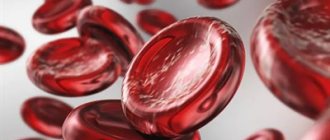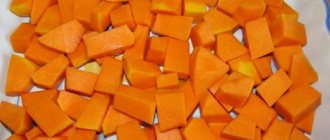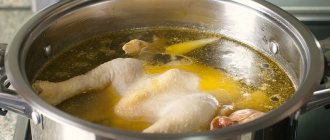Catfish from artificial reservoirs
This is a very large fish - and in order to grow catfish to a “marketable” size, it is often fed with growth hormones. For example, fish that is brought to Russia from Asian countries is famous for this. The catfish that you personally caught in its natural habitat may be more nutritious and safer. Another question is that this is not so easy to do.
Mackerel: it contains mercury
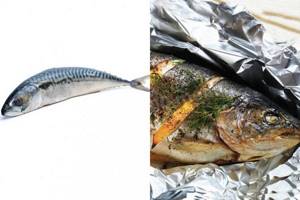
This liquid metal is simply not removed from the human body, accumulating gradually, year after year, and provoking the appearance of very unpleasant diseases. The safest - albeit with reservations - can be considered mackerel, which swims in the waters of the Atlantic Ocean. The only thing that complicates the matter is that most sellers themselves do not really know where a particular batch of fish was brought to them from.
Tuna: Mercury, Antibiotics and Hormones

Unfortunately, tuna is almost impossible to find in the wild, it is on the verge of extinction - and for this reason, hunting it underwater, for example, is prohibited in most countries. The same fish that are grown specifically for sale contain an overwhelming amount of mercury, hormones and antibiotics in their meat. Surely no one wants this bouquet to enter the body?
What is best to cook for different types of fish?
The main problem in choosing a side dish is the following. It is necessary to take into account what kind of fish and in what way the treat is prepared. Based on these data, you should choose the best side dish for fish.
To the cod
This fish goes well with cucumber salad with ginger dressing. It is prepared very simply and easily, but its taste will add extraordinary notes to the main dish.
For cooking you need the following set of products:
- 800 – 1000 g of fresh cucumbers;
- 40 – 60 ml olive oil;
- 200 g Yalta onion;
- 60 g sesame seeds;
- 10 – 15 g chopped ginger;
- 2 cloves of garlic;
- 3 – 4 sprigs of cilantro;
- 50 ml rice vinegar.
For spices, you will need 30 g of sugar and salt in the required quantity.
- Mix oil with vinegar and add salt and sugar.
- Peel the onion, rinse under water and cut into half rings. Pour the prepared mixture over it and leave to marinate for 60 minutes.
- Wash the cucumbers and cut into thin slices.
- Peel the garlic, chop and mix with ginger and salt.
- Combine the cucumbers with onions and sprinkle everything with a mixture of ginger and garlic.
- Transfer the salad to a deep plate and sprinkle with sesame seeds.
This side dish is served separately from the main dish. If necessary, you can decorate it with chopped parsley and dill, as well as small lemon slices.
For salmon (trout)
No matter how banal it may sound, the best side dish for salmon and trout is potatoes. Moreover, you can cook it in any form, but baked potatoes are best.
For preparation you will need the following products:
- 700 g potatoes;
- 3 cloves of garlic;
- 100 ml sour cream with low fat content;
- 1 small bunch of parsley and dill;
- 20 ml oil;
- 100 g hard cheese.
The spices you will need are salt and pepper.
- Peel the potatoes, rinse well and cut into slices.
- Peel the garlic and grind it to a paste.
- Wash the greens and finely chop.
- Place sour cream in a deep plate and mix it with garlic and herbs. Mix everything.
- Grease a baking sheet with oil and place potatoes on it in layers, spreading them with the prepared sauce.
- Grate the cheese and sprinkle it onto the prepared dish.
Place the baking sheet in the oven, preheated to 160 degrees, bake for 25 - 40 minutes, constantly checking for doneness.
To the pollock
Pollock is not an oily fish, so it is best to cook it with carrots and onions.
To do this you will need the following ingredients:
- 600 g prepared pollock fillet;
- 400 g carrots;
- 300 g onions;
- 20 ml sunflower oil.
For cooking spices, use salt and ground pepper (black).
- Cut the fillet into small portions.
- Peel the carrots, rinse and chop on a coarse grater.
- Remove the skins from the onion and cut it into half rings.
- Mix all ingredients, salt and pepper.
- Grease a baking tray with oil, place everything on it and add a small amount of boiled water.
Place everything in the oven, preheated to 160 degrees, cook for 35 - 45 minutes.
This pollock with a side dish has a small amount of calories and is considered a dietary dish.
If for some reason this side dish is not suitable, then the fish can be fried in oil and supplemented with mashed potatoes and herbs.
What to serve pink salmon with
Baked potatoes with mushrooms seem like a very simple side dish. This is true, but it perfectly complements pink salmon dishes.
For preparation you will need the following ingredients:
- 2 kg of potatoes (it is better to take white ones);
- 350 g onions;
- 350 g honey mushrooms;
- 60 ml sunflower oil;
- 6 – 8 cloves of garlic;
- 130 – 160 g fresh dill.
Tilapia: bad fats
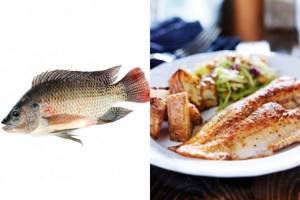
This is one of the favorite fish of chefs - it is easy and quick to cook and very convenient to clean, since there are very few bones in it. The bad news is that there is not much useful in it - but there is a high concentration of very harmful fat, which forms plaques on the walls of blood vessels: the same amount as in lard. In addition, the fish itself does not cause allergies - but it triggers the processes of intolerance to certain foods in the body.
Useful tips
It is important not only to know what side dish goes with the fish, but also to use spices when preparing it that do not differ in aroma and texture from the spices that you used when preparing the fish. Don’t forget about sauces - salsa sauce, onion sauce, nut-tomato sauce, mango-ginger sauce, etc. go perfectly with fish.
You can serve fish dishes with green, grape or olive oil, as well as lemon juice (lemon juice will add a touch of freshness and piquancy to any fish dish). It is advisable to alternate even correctly selected side dishes, which make the food attractive and appetizing. If you do not have the opportunity or time to prepare a complex side dish, use fresh or pickled vegetables cut into slices, and do not forget about greens - this will give the dish the missing attractiveness.

Despite the good nutritional value of the fish, the satiety after eating it lasts for a short time. That's why you need to know what to eat fish with. The period of satiety after eating fish dishes lasts a short time, but side dishes correct this deficiency.
Eating fish with vegetables improves the body's absorption of the latter. The choice of side dish depends on the quality of the combination of both products - fish and side dish. The side dish should help improve the taste and aroma of the fish dish.
In cooking, some combinations of fish and side dishes are already established. As an example, we can offer a combination of boiled fish and potatoes, salted herring, sprat and herring with boiled eggs. Sour foods, pickled vegetables or lemon go well with fatty fish. Fresh fish is enhanced by pickled cucumbers, capers, and olives.
Eel: intoxication of fish with harmful substances
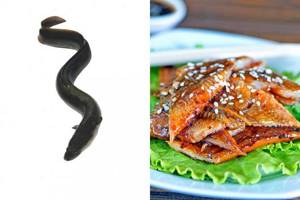
Eel is highly revered in Asian countries - in Japan, for example, it is considered a true delicacy. In general, everything is clear, because this is a really tasty and nutritious fish. The problem is that the eel successfully absorbs during cultivation all the harmful substances that may be in its environment. There may be an impressive part of the periodic table - but it is simply impossible to determine this by the appearance of the fish.
Pangasius: mercury and carcinogens
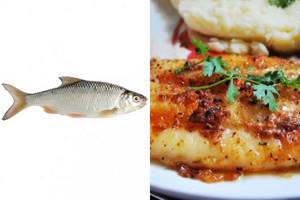
This is a fish with very tender and tasty meat, but it is brought to Russia mainly from Vietnam. There it is grown in the dirtiest river on the planet - the Mekong. This means that this close relative of flounder contains critical levels of mercury, carcinogens and other substances very harmful to human health.
Which fish is the most harmful?
There are “scavenger” fish that are ready to eat anything, including food garbage. They thrive in the dirtiest water, saturated with waste and chemicals. Everything would be fine, but only this kind of fish is caught and released for sale.
There is information floating around the Internet that this most unhealthful fish for humans comes from Vietnam, where it is grown on small farms (read it for yourself, it’s very interesting). Therefore, step away from the counter with the proud air of a knowledgeable person if the label says:
Liver is a special delicacy. Sardines are also often smoked, salted or preserved in oil. The small baby turbot has particularly tender flesh. The best tuna is the brightly fleshy Albacore or "white tuna", which is found mainly off the coast of Spain. More common, however, is red tuna, whose vitamin-rich, reddish flesh resembles veal and sometimes beef. Particularly delicious: the small veal bonito.
The bite is quick on the flesh and expressive on the palate, it sometimes marries perfectly with red wine. Very low fat. Preparation: all cooking methods. The fillet with the skin fried in butter is pure pleasure - a culinary experience. Origin: Swiss lakes, especially Lake Constance. Subtle taste, similar to pike. Preparation: many types of preparation. It is especially good when cooked under a straw crust in the oven.
- telapia;
- pangasius (sea tongue).
Eat sea fish and be healthy!
18:48:53 — 14.06.2017
White sea fish have a characteristic white flesh color and are divided into two categories:
Flat white fish (this category includes halibut and flounder);
Round white fish (this group includes perch, cod fish (saithe, haddock, hake, cod, pollock, etc.), monkfish, red snapper).
The production of food products from sea white fish begins immediately on board the fishing vessel. Fishing is carried out in the northern parts of the oceans, white fish is caught from the deepest and coldest waters. As a rule, white fish is gutted before shock freezing to preserve the white color of the meat. The deep-freezing method immediately after catching helps preserve the taste and aroma of white sea fish in its original form. The taste of white fish is highly valued all over the world. White sea fish has dense meat, a fresh sea aroma and a wonderful taste. It is considered a dietary product, since the fat content in white fish is low or average. But in terms of protein content, nutrients, amino acids, fatty acids, vitamins and microelements, white fish is not inferior to red fish and fatty fish. There are few fatty varieties of white fish: herring, greenling, halibut, mackerel and catfish, and the most dietary, so-called skinny fish, are almost all cod, haddock, flounder and muksun. Recently, sea bass has also become very popular - a white sea fish, the recipes for which came to us from Mediterranean cuisine. Mullet is also a white sea fish and has been caught in the Black Sea for a long time.
Populations of white sea fish are large enough and are recovering well, so quotas for catching fish of this species are almost unlimited. Thus, at any time of the year you can buy fresh white fish at a low price.
There are thousands of recipes for cooking white sea fish in the world, since it is good in any form - boiled, fried, baked over coals or in foil, grilled, and even raw. The flesh of white fish can be very tender or denser, depending on this the cooking method is selected. Cod, halibut, dorado and congrio are fish with dense flesh, so they can be safely recommended for grilling and frying. The meat of this white fish is quite dense and will not fall apart when handled. It is better to cook flounder, sole and sea bass breaded or steamed, since the meat of these fish is very tender and can lose its shape during cooking. Fatty white fish is suitable for salting and smoking. Skinny white fish is good as cutlets and steaks.
In the More Fish store you can choose white fish to your liking, and we guarantee its quality and freshness!
Tile: contains mercury, should not be given to children
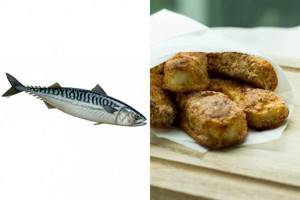
Many people like tilefish for its delicate taste, its meat is very easy to cut, and fish is easy to clean. The only problem is that it is the tile that contains the most mercury, which it receives from contaminated water. When industrially catching tilefish, methods and techniques prohibited by sanitary authorities are often used - therefore, there is also some risk of a banal eating disorder after finishing a tasty but hazardous dinner. If adults without health problems are allowed to eat this fish from time to time in very small quantities, then pregnant women and children should not be given it at all.
Fish not recommended for consumption
tilapia
There is no doubt that tilapia is a good source of lean protein, but it does not contain omega-3 fatty acids. This is significant because most people do not get enough omega-3 fatty acids from food. When choosing fish, choose those that contain large amounts of this important nutrient.
Tuna
Fresh tuna is an excellent source of omega-3 fatty acids. But eating this fish is associated with a high risk of mercury poisoning.
If mercury enters our body, we are more likely to develop cognitive impairment and other health problems. Don't think that eating canned tuna is safer.
Buy tuna from places that test the fish for mercury levels. But, as a rule, very few companies care about the safety of their products.
Som
Catfish, 90% imported, are grown in polluted waters. Therefore, it may contain harmful chemicals and antibiotics. If you still can't resist the pleasure of eating a piece of catfish, choose fish grown on domestic fish farms, or try Asian carp, which tastes like catfish.
Next time you're thinking about what to make for dinner, listen to your nutritionist's recommendations and choose fish that are rich in omega-3 fatty acids, low in mercury, and sustainably caught or raised. When purchasing canned fish, make sure it does not contain BPA (bisphenol-A), an organic chemical that can cause a number of serious health problems.
Sea bass: most often counterfeited
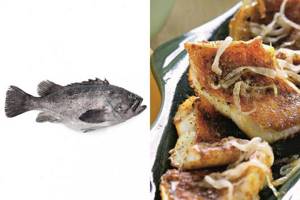
You need to be especially careful with this fish when ordering in restaurants or cafes, especially in tourist areas. Perch is very popular for its exquisite taste and ease of cutting - which is why unscrupulous owners of food industry establishments sometimes sell pangasius or other cheaper fish for it. The solution is to order fish cooked whole, not in steaks or breaded pieces.
Oily fish: poorly absorbed by the body
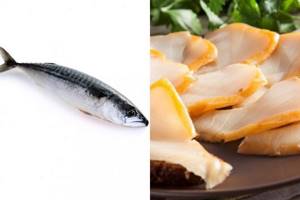
The fish themselves are relatively harmless, even those that are farmed and artificially fed for sale. But its meat is quite poorly absorbed by the human body. This can cause digestive upsets - it is best to grill butterfish with plenty of lemon juice and spices and serve with a regular salad or rice.
Back Next
The healthiest fish
Sardines
You can't go wrong with sardines. It is an excellent source of omega-3 fatty acids. This fish is caught in the open sea and is relatively cheap.
A 100-gram serving of sardines will provide you with 2 grams of heart-healthy omega-3 fatty acids. This is the highest content of omega-3 fatty acids in fish and the lowest, no matter how strange it may sound, mercury content.
Fish and shellfish are known to accumulate mercury in their bodies like a sponge, often in the form of methylmercury, a highly toxic organic mercury compound. So if the fish was caught in environmentally polluted waters, eating it will not do any good!
By including sardines in our diet, we enrich the body with calcium and vitamin D, which support the health of our skeletal system. In the store you will find canned sardines in their own juice, tomato sauce or olive oil. Read the label carefully to make sure you are not exceeding your daily intake of table salt and fat.
Sardines are a safe choice for pregnant and breastfeeding women. Sardines are not only healthy, but also tasty. Drizzle lemon juice and 1 teaspoon olive oil over the sardines. You can serve the sardines with chopped tomatoes and basil, oregano or other Italian seasonings. For a quick snack, sardines on whole grain crackers are suitable.
Herring
A serving of fatty herring contains 1.5 grams of omega-3 fatty acids. Herring boasts that it contains much more omega-3 fatty acids compared to salmon and tuna. These acids are very important for health because they are not produced by our body.
Herring contains much less mercury than other fish, such as tuna, king mackerel, swordfish or halibut.
Herring should be consumed chilled, marinated in wine vinegar with red onion and dill. Another popular way to serve herring is herring with mustard and dill.
Mackerel/mackerel
Mackerel from the Atlantic or Alaska is high in omega-3 fatty acids, so necessary for effectively combating inflammatory processes in our body, and low in mercury. But not all mackerel is good to eat!
Thus, mackerel from the western part of the Atlantic and the Strait of Mexico contain a lot of mercury. Nutritionist Julia Zumpano also advises limiting the consumption of Spanish mackerel. All for the same reason.
Mackerel can be grilled or boiled and then added to a salad or served with grilled vegetables.


